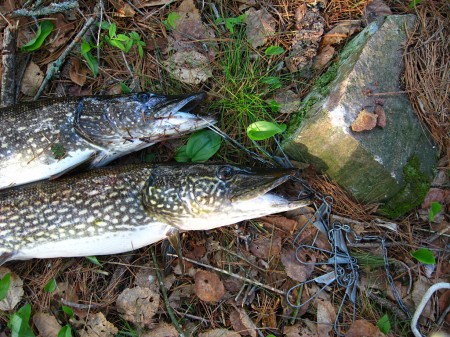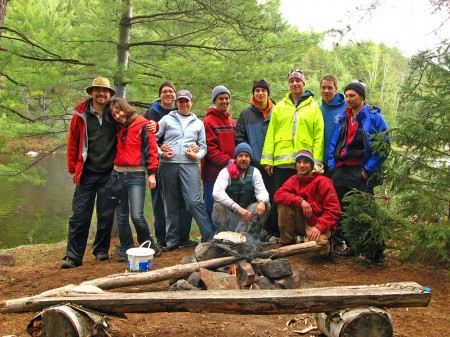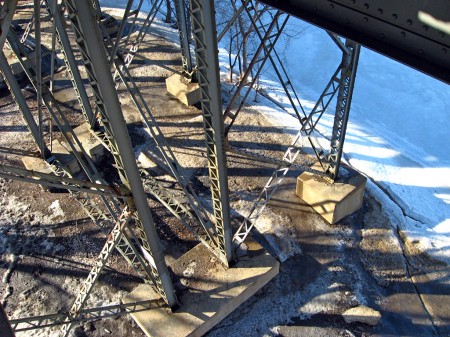The Smoky Lake canoe trip provided a delicious opportunity to deviate from my ordinary shunning of meat-eating. There are three major reasons for which I do not normally eat animal flesh: it is generally produced in a way that is not environmentally sustainable, the animals generally live in very poor conditions, and a number of unhygienic practices are endemic in factory farms. I maintain that when most people choose to eat meat, they do so in either honest or wilful ignorance about the consequences of that choice.
Happily, the trip provided an exception to all those objections in the form of lake-caught pike. I saw the lake they came from, the way they were caught and cleaned, and the way they were cooked. Two fish among eleven people probably isn’t causing damage to the ecosystem, particularly since it is a once a year trip. Furthermore, it is fair to say that a pike living in an attractive lake in Ontario is living an existence true to its nature: a statement that surely cannot be made truthfully about most animals people eat.
In any case, our pan fried pike was exceedingly delicious: as the result of its character, freshness, and the fundamentally food-improving qualities of camping. The experience of seeing it delivered from lake to plate has also made me somewhat rethink my view of sports hunters and fishers. While it is certainly true that ecosystems can be damaged by such activities, it is also fair to say that those who especially enjoy such activities might be passionate, knowledgeable, long-term advocates of conservation. It should be further asserted that – environmental considerations aside – those with such skills can make a most satisfying contribution to an expedition outdoors.




